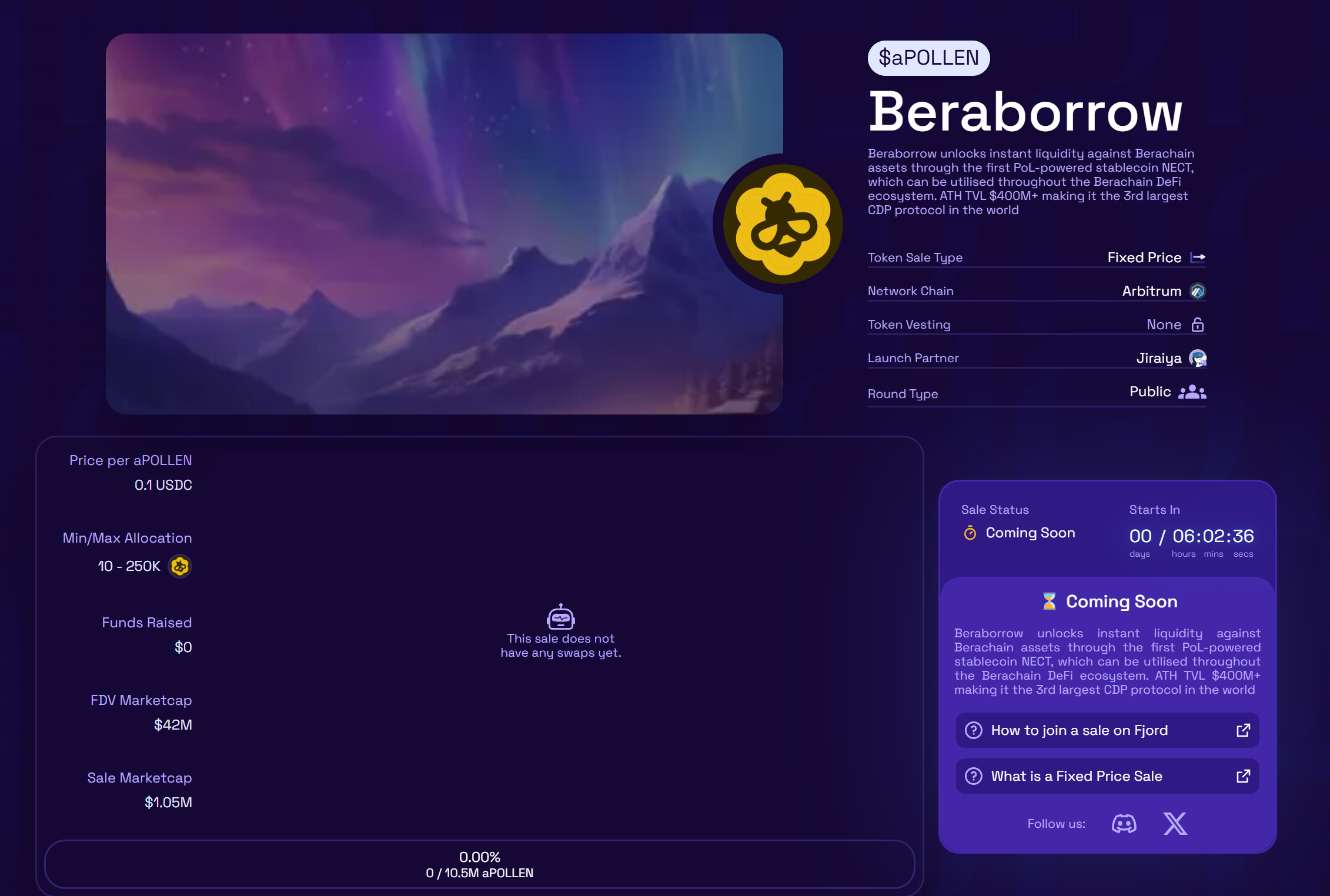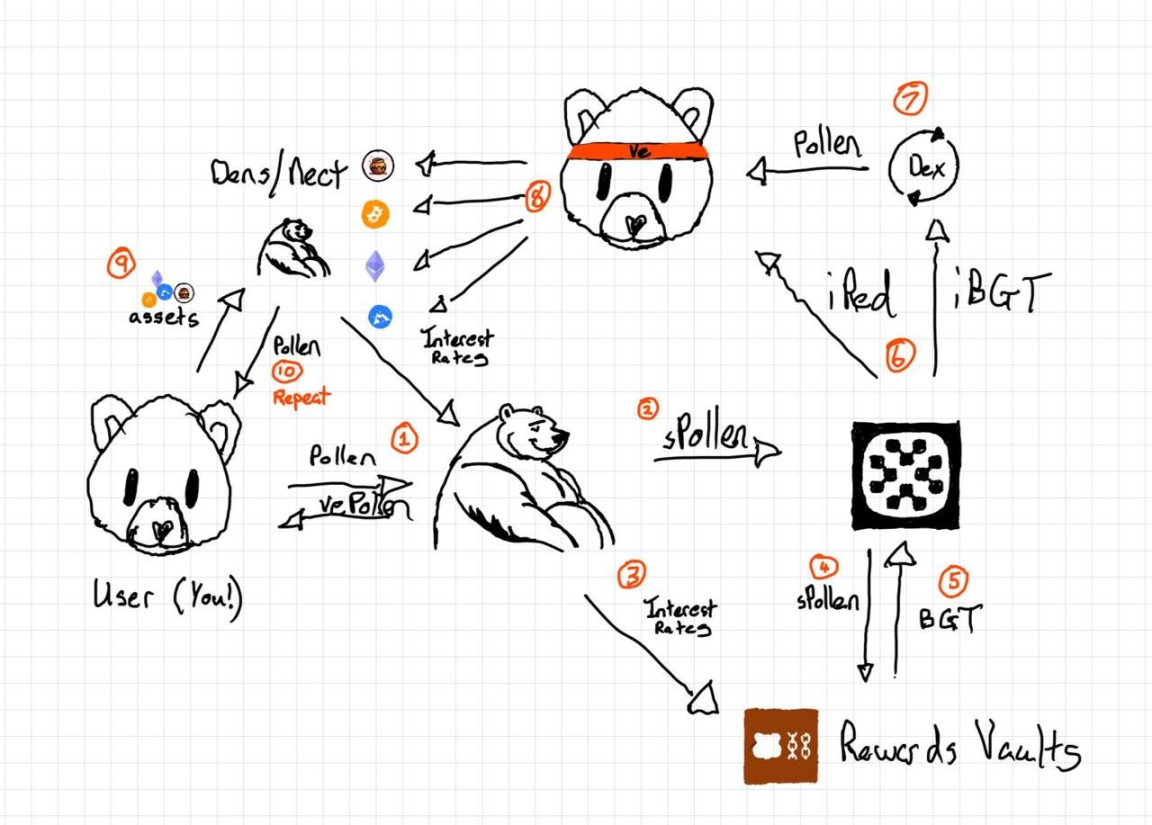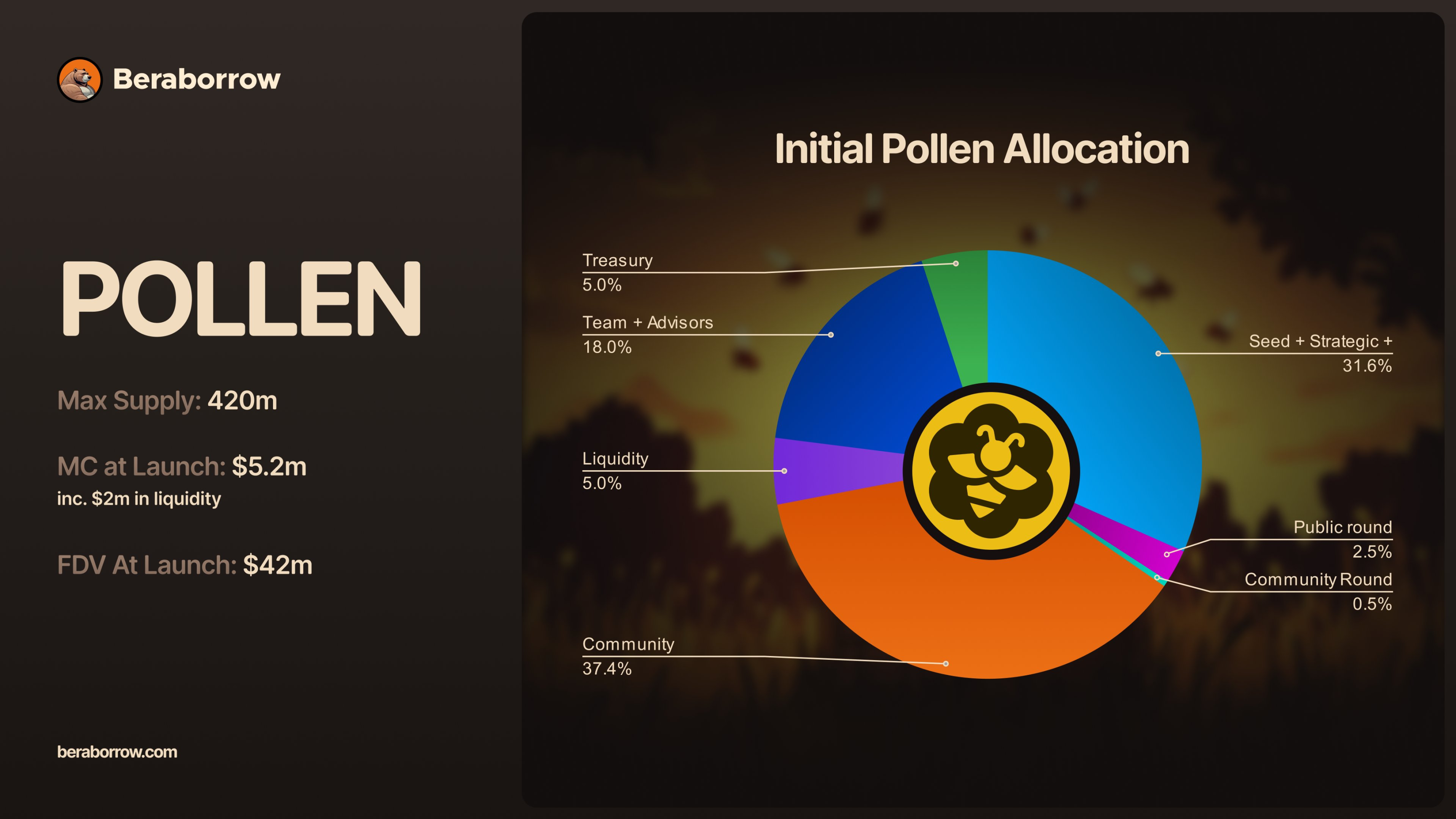The lending agreement Beraborrow launched a public offering today. Is its unique design worth participating in?

Reprinted from panewslab
03/28/2025·1MAuthor: 1912212.eth, Foresight News
On March 25, BeraChain officially launched the liquidity certificate (POL), and its currency price also rose from around US$5 to the current US$8.6, which is particularly eye-catching in the mainstream currency market environment where the general decline is falling. After the public chain entered the governance stage, its ecological opportunities have also begun to be watched by keen investors. Beraborrow officially launched public offerings today, with 2.5% of the total supply of token POLLEN to be provided through Fjord Foundry for $42 million FDV, and Beraborrow plans to raise $1 million. Users enter the Fjord Foundry related page and follow the corresponding prompts to participate.

As a decentralized lending protocol based on BeraChain's public chain, Beraborrow has become one of the highly-watched DeFi projects of BeraChain since the beginning of 2025 with its unique interest-free lending model and innovative Proof of Liquidity (PoL) mechanism.
What is Beraborrow?
Beraborrow is a DeFi lending protocol on the BeraChain chain, designed to provide users with efficient and flexible asset liquidity solutions. BeraChain itself is known for its unique PoL consensus mechanism, building a blockchain network with ecological prosperity as its core by rewarding users who provide liquidity instead of traditional proof of work (PoW) or proof of stake (PoS).
Beraborrow releases the instant liquidity of BeraChain assets through the stablecoin Nectar (NECT), supported by the Proof of Liquidity (PoL) mechanism. Designed with simplicity and flexibility at the core, Beraborrow aims to maximize opportunities for users without sacrificing yields.
This protocol allows users to deposit collateral assets into Dens, thereby minting an over-collateralized stablecoin NECT. NECT can be used in the BeraChain DeFi ecosystem, unlocking more opportunities while still maintaining exposure to original assets. Initially, Beraborrow was built mainly around iBGT, but has now developed into a multi-collateralized asset platform, supporting BeraChain native tokens, liquid staking derivatives (LSDs) and LP positions as collateral to mint NECT.
The core highlights are as follows
Instant liquidity
Liquidity is unlocked without selling BeraChain assets. Users can deposit collateral into Dens, mint Beraborrow's over-collateralized stablecoin NECT while still holding the original assets. After borrowing, you can seamlessly use NECT to participate in various DeFi protocols.
Automatic leverage
With Lightning Loan, Beraborrow provides users with seamless on-chain leverage. Simply adjust the slider to expand exposure or maximize returns, and the system automatically manages the complexity of synthetic leverage through recursive lending.
Earn profits through liquidation
Participate in Liquid Stability Pool to fully realize the potential of NECT assets. Pledge NECT to receive liquidation rewards and earn fees from operations performed by other users on Beraborrow.
Automatic compound interest Dens
Dens has now supported automatic compounding, and users' returns will be automatically reinvested to iBGT, increasing the mortgage rate over time, forming a self-enhanced return mechanism, and maximizing the returns deposited into assets.
Tokenised Dens (Tokenized Dens)
Beraborrow unlocks new governance and incentive mechanisms through Dens tokenization. These tokenized assets can be deposited into Infrared vaults, and the proceeds generated by the vaults will be automatically reinvested, providing users with continuous rewards and continuously optimizing their mortgage positions.
LP positions as collateral
Beraborrow allows users to use Bex and Berps LP positions as collateral to lend funds while still earning liquidity returns. This dual-income model allows liquidity providers to take into account both liquidity and profits and create more value.
Arbitrage strategy
Beraborrow's Liquid Stability Pool provides users with arbitrage opportunities. Users can use sNECT to arbitrage between clearing asset pools and decentralized exchanges, maximizing returns while enhancing the funding stability of the agreement.
Token Economics
On March 25, Beraborrow's private placement sales have raised $170,000 and will officially launch a public placement at Fjord Foundry today. Beraborrow's governance token POLLEN, with a total of 420 million coins, POLLEN holders can participate in key decisions in the agreement, such as adjusting collateral types and protocol parameters. Currently, users can accumulate POLLEN points by using NECT to participate in ecological activities such as providing liquidity in Kodiak Finance or holding NECT, which will be redeemed in the future as POLLEN tokens. According to official data, since its launch, TVL has exceeded US$390 million and NECT has minted more than US$100 million.
It enables the protocol to capture value from the Proof of Liquidity without creating a new reward vault individually for each NECT (our stablecoin) use case.

More NECT application scenarios have prompted more users to use Beraborrow for leverage operations, thereby increasing overall interest rates and fees. These benefits flow to sPOLLEN's BeraChain reward vault, which is then used to incentivize liquidity and promote further ecological growth. This cycle repeats continuously, forming a "flywheel effect".

37.4% of the total tokens are allocated to the community, 31.6% are allocated to seed rounds and strategic round investors, 18% are allocated to teams and consultants, 5% are allocated to the treasury, 5% are allocated to liquidity pools, 2.5% are allocated to public rounds, and 0.5% are allocated to community rounds.
It is worth mentioning that the official has stated that after the vote is completed, 60% of the agreement fees will be allocated to the governance plan determined by vePOLLEN holders.
summary
A popular public chain is often extremely important in its ecological infrastructure such as DEX and lending agreements. If it can run out of representative projects and go to large institutes, it will have a positive effect on its ecosystem and public chain itself. When investors participate in ecological opportunities, they need to comprehensively consider the market conditions and project fundamentals, and pay attention to risk control.

